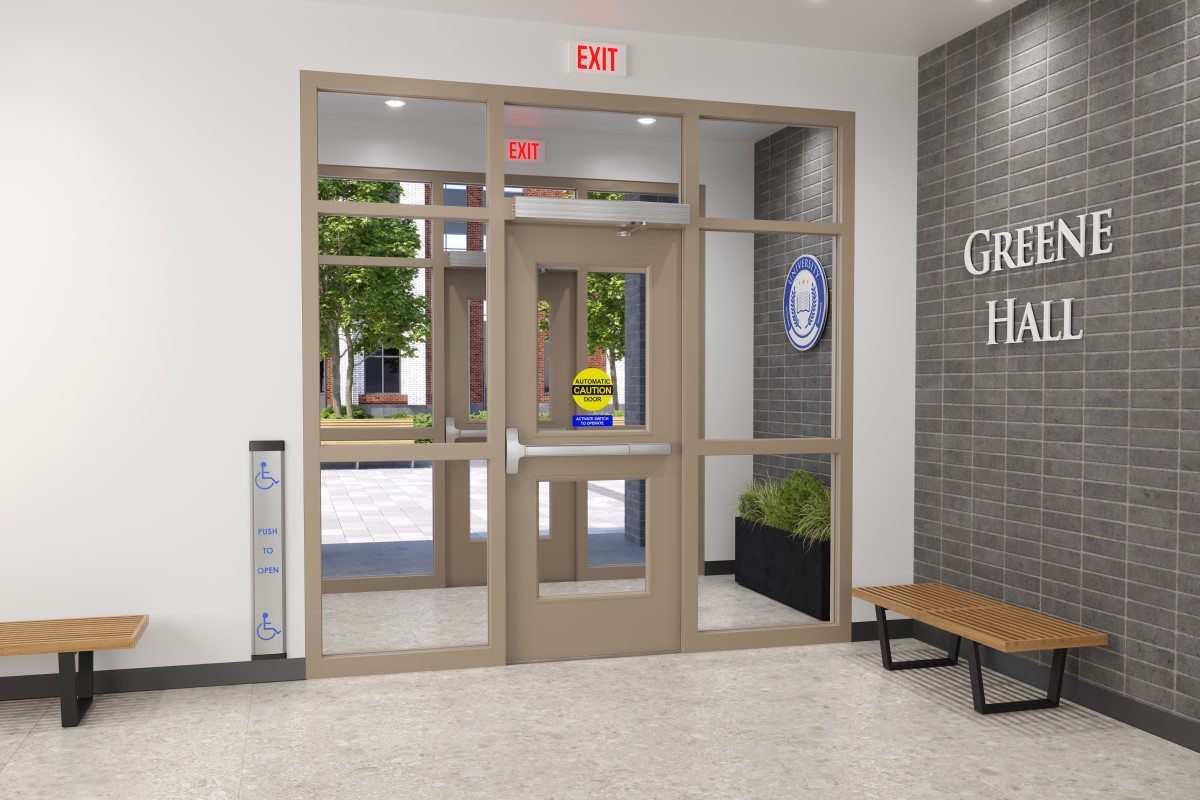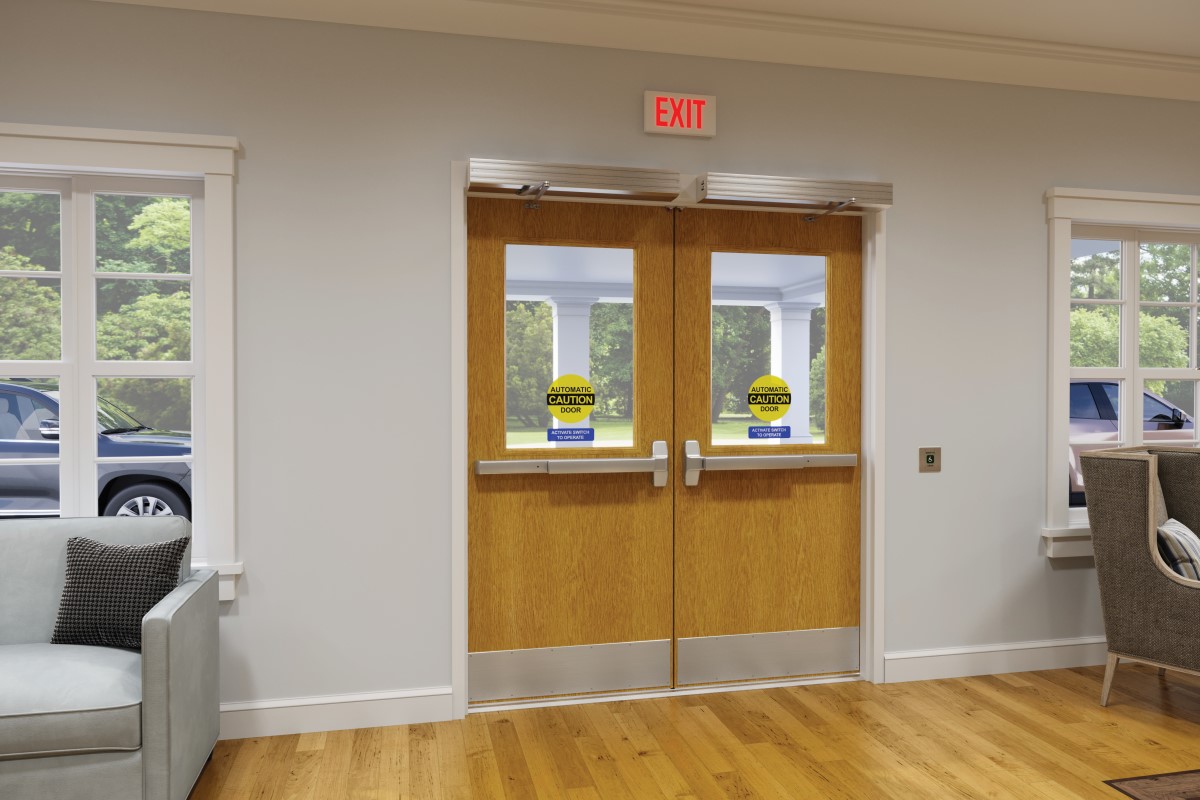In this Decoded article for the accessibility issue of Door Security + Safety Magazine, I covered the accessibility requirements for automatic doors.
~~~
This Decoded article will be published in Door Security + Safety
.


Beginning with the 2021 edition of the IBC, accessible public entrances serving some buildings are required to have automatic doors. This is based on the use group and the occupant load of the building.
Because of a change to the 2021 edition of the International Building Code (IBC), which was carried forward into the 2024 edition, the use of automatic operators is increasing. Although the codes and standards did not prescriptively require automatic doors in previous editions, the IBC change mandates the use of automatic operators on accessible public entrances serving buildings of certain use groups and with an occupant load over a specific threshold.
Given the increased focus on automatic operators, it seems like a good time to answer these questions:
Are automatic doors required to meet the same accessibility requirements as manually operated doors? If not, what are the differences?
The accessibility standards include two separate sections, one for manual doors, doorways and manual gates, and the second for automatic and power-assisted doors and gates. This answers the first question – automatic doors are not required to meet all of the same requirements as manual doors – each type has its own section of the standards.
According to ICC A117.1 – Accessible and Usable Buildings and Facilities and the ADA Standards for Accessible Design, the requirements for automatic doors include the following. These requirements also apply to gates that are part of an accessible route.
ANSI/BHMA Standards: Low-energy automatic doors and power-assist doors are required to comply with ANSI/BHMA A156.19 – Power Assist and Low Energy Power Operated Doors, while full powered automatic doors must comply with ANSI/BHMA A156.10 – Power Operated Pedestrian Doors. These standards include many requirements related to automatic doors, including actuators, safety sensors and guide rails, hold-open time, opening force and speed, and signage.
Public Entrances and Vestibules (ICC A117.1 only): As previously mentioned, beginning with the 2021 edition of the IBC, accessible public entrances in some buildings are required to have automatic operators. This requirement is based on the use group and occupant load of the building. ICC A117.1 includes a related requirement for full-powered or low-energy automatic doors at these entrances. Power-assist doors, which have operators to reduce the opening force but still require manual operation, are not an option where automatic doors are required at accessible public entrances. The current ADA standards do not include this requirement.
Clear Width: Automatic doors are required to provide a clear opening width of at least 32 inches, in both the power-on and power-off modes. The clear width is measured with all door leaves in the open position. This differs from the clear width requirements for manual doors, which must have at least one leaf that provides 32 inches clear.

The accessibility standards require automatic doors to comply with the applicable BHMA standards, A156.10 or A156.19. These standards include additional requirements beyond what is stated in the accessibility standards.
Maneuvering Clearances: The maneuvering clearances required for manual doors are to ensure that someone using a wheelchair has the necessary space to maneuver to operate the door manually. Automatic doors are not required to have the same maneuvering clearance as manual doors, but power-assist doors do require the same maneuvering clearance, as these doors are operated manually.
One important requirement to note is that if an automatic door is part of an accessible means of egress, the door must have the required maneuvering clearance for manual operation on the egress side. This requirement does not apply if the automatic door has standby power or battery backup, which would allow the door to be operated automatically in an emergency. If a fire door assembly is equipped with an automatic operator, the operator is required by NFPA 80 to be deactivated during a fire. For this reason, fire doors serving an accessible means of egress must have the required maneuvering clearance for manual operation on the egress side. Automatic doors (non-fire-rated) that remain open in the power-off condition, and automatic sliding doors with a break-away feature (ICC A117.1 only) are not required to comply with the maneuvering clearance requirements.
Thresholds: Whether a door is automatic or manual, the accessibility standards include the same requirements for thresholds and changes in level. Thresholds (if provided) are limited to ½-inch in height. A vertical change in level of ¼-inch is permitted, and from ¼-inch to ½-inch, the maximum slope is 1:2. If the threshold height is greater than ½-inch, the threshold is considered a ramp and will have a slope no steeper than 1:12. There is an exception in both accessibility standards for existing or altered thresholds. At these locations, a 3/4-inch maximum height is permitted, if the threshold is beveled on each side with a maximum slope of 1:2. ICC A117.1 specifies that this slope applies to the portion of the threshold height exceeding ¼-inch.
Doors or Gates in a Series: When two doors are installed in series, the accessibility standards require a minimum distance between the doors of 48 inches plus the width of any door or gate swinging into the space. For example, if a 36-inch door is swinging into a vestibule, with another 36-inch door swinging out of the vestibule, the minimum dimension of the vestibule in the direction of travel will be 84 inches, nominal (48 inches + 36 inches). The standards also require a turning space within the vestibule (the required size varies), but ICC A117.1 includes an exception for automatic doors. If both of the doors in series are automatic doors, the turning space is not mandated by this standard.
Controls: ICC A117.1 and the ADA standards require compliance with Section 309 of those publications, which states that operable parts must be able to be operated with one hand, and without tight grasping, pinching, or twisting of the wrist. This section limits operable force for controls to 5 pounds, maximum, and the section refers to the allowable reach ranges to establish the mounting height of the actuator. The standards also state that the clear floor space adjacent to the controls must be located beyond the arc of the door swing. Detailed requirements for automatic door actuators are found in the BHMA standards, and the accessibility standards require compliance with these standards, so it’s important to check A156.19 or A156.10 for additional requirements.
Operable Hardware: ICC A117.1 requires the hardware for automatic doors to meet the same requirements as manual doors. For example, handles, pulls, latches, locks, and other operable parts must have a shape that is easy to grasp with one hand and that does not require tight grasping, pinching, or twisting of the wrist to operate. The 2017 edition of the standard also limits the amount of operable force for door hardware to 15 pounds of forward pushing or pulling motion, or 28 inch-pounds of rotational motion. The ADA standards do not currently include a paragraph for door and gate hardware in the automatic door section.
Break Out: For full power automatic sliding doors with a break out feature, the minimum clear width of the break out opening when operated in the emergency mode is 32 inches. ICC A117.1 includes an exception for locations where manual doors complying with the standard serve the same means of egress. In these locations, the clear width requirements for break out openings do not apply.
Revolving Doors: Both the ICC A117.1 and ADA standards state that revolving doors, gates, and turnstiles must not be part of an accessible route.
There are additional requirements found in the sections addressing manual doors that do not apply to automatic doors. For example, manual doors (with a few exceptions) are required to have a flush smooth surface on the push side, measured 10 inches up from the floor. The automatic door section does not include this requirement. The opening force and closing speed sections of the accessibility standards are not referenced in the automatic door section, although the BHMA standards and the model codes include limitations that would apply.
State and local accessibility requirements may vary, so it’s important to refer to the adopted codes and standards. In addition, the applicable BHMA standards should be referenced for detailed information related to automatic doors. For additional assistance, consult with the Authority Having Jurisdiction (AHJ).
You need to login or register to bookmark/favorite this content.









Leave A Comment